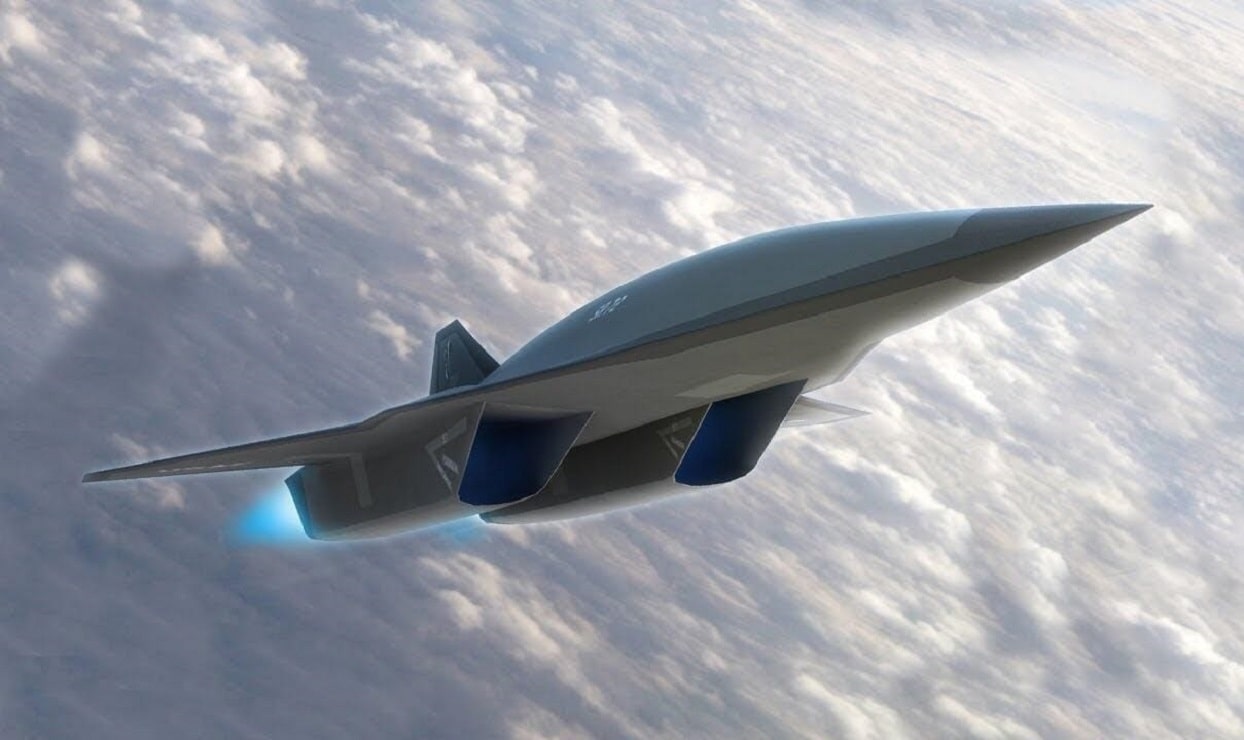Envisioned as an unmanned, reusable hypersonic intelligence, surveillance, and reconnaissance (ISR) aircraft, the much-touted SR-72 could, in theory, reach speeds of Mach 6 – double the speeds of the original Lockheed SR-71 Blackbird.
While this isn’t exactly a secret, what is unclear is whether the Son of the Blackbird, as the unmanned aerial vehicle (UAV) has been dubbed, was ever more than vaporware.
SR-72: Is It Really Real?
NASA did award a contract to Lockheed Martin to study the feasibility of building a propulsion system for the aircraft, The Aviation Geek Club reported a few months back. Citing the upcoming 75 Years of Lockheed Martin Skunk Works by James C. Goodall from Ospey Publishing, it appears that the NASA contract was for a parametric design study, which could, in turn, establish the viability of a turbine-based combined cycle (TBCC) propulsion system.
Previously it was suggested that the SR-72 “Darkstar” featured a propulsion system that is centered on a turbine-based combined cycle, which merges a modified production fighter turbine engine with a dual-mode ramjet – also called a scramjet. Such an engine would have enabled the aircraft to accelerate from a standing start to Mach 6 – double that of the record-setting SR-71 Blackbird.
With such speed, the “Darkstar” would have been capable of reaching any destination in the world in about an hour, a true selling feature for an ISR aircraft. Additionally, the platform could have been employed like a bomber and it could carry weapons that would be able to target remote parts of the world from the very edge of space. It was also reported that the aircraft could be capable of firing hypersonic missiles, making it an extremely dangerous plane.
Hype or Reality?
As far back as 2013, discussions of the SR-72 Darkstar’s various capabilities have made the rounds in the media, while the fact that supposedly using off-the-shelf materials has kept it affordable in this era of tight budget constraints.
In 2017, Lockheed Martin had announced that the SR-72 would be in development by the early 2020s and could be in service by the early 2030s, but a year later it was announced that progress had been slow going based on the technological demands of the project.
“Without the digital transformation the aircraft you see there could not have been made. In fact, five years ago, it could not have been made,” explained Lockheed Vice President Jack O’Banion, referencing an artist’s SR-72 rendering presented at the American Institute of Aeronautics and Astronautics’ annual SciTech Forum in 2018.
While O’Banion’s statement suggested that an SR-72 prototype or concept demonstrator had been produced, more recently it had been stated that the prototype of the platform wasn’t even scheduled to fly until 2025.
The year-long novel coronavirus pandemic certainly hasn’t helped matters, and it is unclear if the project has moved forward at all in the past year. While various sources suggest work on the ramjet engines has continued, for now, the SR-72 Darkstar may still in the vaporware stage – and it is unclear when or even if it ever takes to the skies.
Peter Suciu is a Michigan-based writer who has contributed to more than four dozen magazines, newspapers and websites. He regularly writes about military small arms, and is the author of several books on military headgear including A Gallery of Military Headdress, which is available on Amazon.com.

